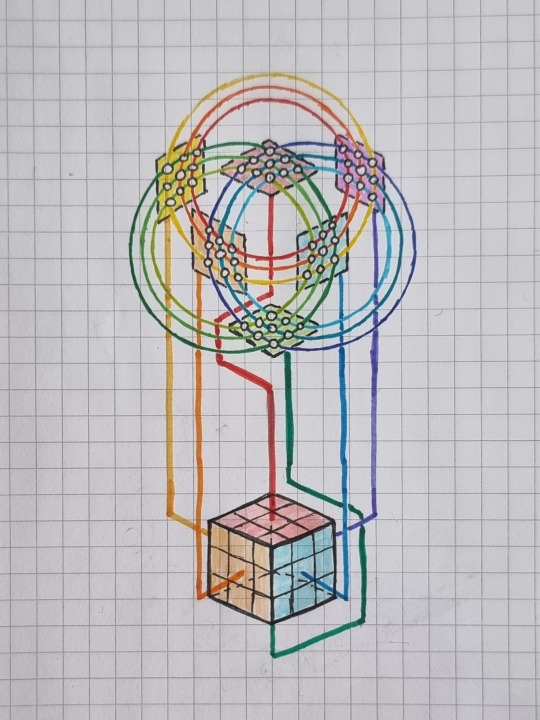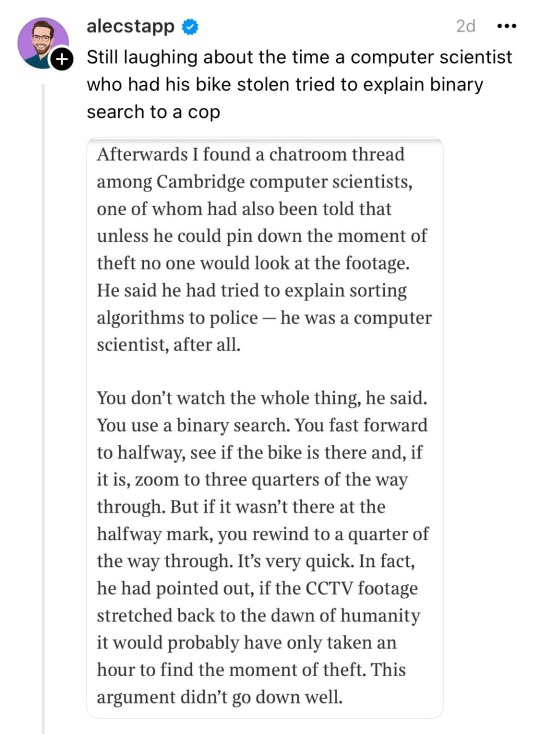#MATH
Text

This has caused great debate among my math friends so I think it needs tumblr's input
#mathblr#math#triangles#geometry#the correct answer is fuck scalene marry isosceles kill equilateral btw#it's literally common sense#sky.txt
575 notes
·
View notes
Text
#funny shit#world cup#anime food#cute cats#dekubowl#math#relationship quotes#joan jett#laugh#Diet#geto smut#pink hair#derek chauvin#medblr#pov
142 notes
·
View notes
Text
https://margaret-617.ludgu.top/yw/P89hoVL
#swords#team rocket#shoujo ai#musicians#math#dreamcore#newds for sale#nick x charlie#desamor#relationship quotes#izombie
120 notes
·
View notes
Text
In 1931, the Austrian logician Kurt Gödel pulled off arguably one of the most stunning intellectual achievements in history.
Mathematicians of the era sought a solid foundation for mathematics: a set of basic mathematical facts, or axioms, that was both consistent — never leading to contradictions — and complete, serving as the building blocks of all mathematical truths.
But Gödel’s shocking incompleteness theorems, published when he was just 25, crushed that dream. He proved that any set of axioms you could posit as a possible foundation for math will inevitably be incomplete; there will always be true facts about numbers that cannot be proved by those axioms. He also showed that no candidate set of axioms can ever prove its own consistency.
His incompleteness theorems meant there can be no mathematical theory of everything, no unification of what’s provable and what’s true. What mathematicians can prove depends on their starting assumptions, not on any fundamental ground truth from which all answers spring.
Natalie Wolchover, How Gödel’s Proof Works, Quanta Magazine, July 14, 2020
#quote#mathematics#science#Kurt Godel#Kurt Gödel#Godel#Gödel#proof#truth#incompleteness theorem#theorem#Gödel's Incompleteness Theorems#Godel's Incompleteness Theorems#math#mathematician#logic#knowledge#ignorance#theory of everything
46 notes
·
View notes
Text
Introduction to Topology Master Post
Metric Spaces
Topological Spaces and Continuity
Closed Sets and Limit Points
Hausdorffness
Connectedness
Path Connectedness
Compactness
Bases and Second Countability
Product Spaces
The Heine-Borel Theorem
Quotient Spaces
Important Examples
Conclusions and Remaining Questions
47 notes
·
View notes
Text
Taylor series? Yeah, I've read Worm
27 notes
·
View notes
Text

my math teacher to me
#NO CAUSE HE KNOWS I DONT KNOW E V E R Y T I M E#midnights#you’re losing me#ts midnights#midnights vault track#ts#swiftie#swifties#ts10#ts10 midnights#taylor swift vault tracks#relatable#funny#haha#math#mathematics#school#taylor swift#taylor swift meme
23 notes
·
View notes
Text

My great grandfather “Bud” Wilbur gave his son Jack an Erector Set one Christmas then took it back the same day. The Erector Set was a children’s toy made of metal pieces that allowed kids to build various model structures like bridges and poorly made bridges. Before video games, children had very few choices for entertainment: marbles, Erector Sets, or becoming a Peeping Tom. Those were the choices. My grandpa Jack was going to be an engineer like his father, and to seal his fate, great grandpa Bud bought him the tools to try his hand at building. Bud, seeing the pieces scattered on the floor must have thought “pearls before swine” while having his eureka moment. Using the toy he had bought his son, he built a model of what he called The Simultaneous Calculator, what the American papers in 1937 called “Robot-Einstein,” and what the Japanese dubbed “The Wilbur Machine.”
He didn’t build the first calculator. I believe that honor technically belongs to the Mesopotamians who made the first abacus. Nor did the calculator conceptually resemble the digital computing systems we have now that employ ones and zeros and a lot of electricity. The Wilbur Machine was an analog computing system with pulleys and brass bars that solved 9 equations simultaneously (or 9x9 systems according to an MIT grad’s thesis that I can only comprehend up to page 4). Math equations that once took a full day to solve now took roughly 1-3 hours. It sped up the production of large structures, power grids, and for one country it seems, planes. It was a big advancement in 1936-37, an advancement that was eclipsed by better smaller machines soon after. In the United States, that is. In Japan, a 3x3 system Wilbur Machine was replicated in the late 30s and a fully functioning 9x9 calculator was completed in 1944 at the Tokyo Imperial University’s Aviation Laboratory.
You read that correctly. My great-grandfather Bud Wilbur built a machine that was stolen by an Axis power right before World War II. Japan continued to use the machine until the war’s end. So, uh…sorry about that? It wasn’t Bud’s intention.
Read the rest of the essay here.
#essays#essay#writing#reading#personal essay#Japan#interesting#travel#science#math#MIT#Wilbur machine#dan wilbur#long reads#movies#family
22 notes
·
View notes
Text


#statistics#memes#meme#lol#mathematics#mathblr#math#maths#relatable#relatable meme#relatable memes#dog meme#dog memes#this is fine meme#this is fine dog#funny#Twitter#Twitter meme#Twitter memes
58K notes
·
View notes
Text
You guys are never gonna believe what the name of this sculpture is


24K notes
·
View notes
Text

13K notes
·
View notes
Text
People on this site will put together polls like "The Banach-Tarski Paradox versus Camembert Cheese", then act like the results prove that they're surrounded by idiots.
9K notes
·
View notes
Text

Visualization of the Rubik's cube
#permutation#permutations#groups#group theory#rubiks cube#rubikscube#math#mathematics#math visualization#visualization#knottys math#math stuff#mathy stuffy#cube#hexahedron#combinatorics
14K notes
·
View notes
Text
ok wait, reblog if you’ve cried at least once because of math, doesn’t matter which grade
i’m trying to prove something
72K notes
·
View notes
Text

Stolen from twitter.
Remember that the ÷ symbol is usually not used in equations, and never used in an equation that used brackets to imply multiplication without a X sign, because it would create ambiguity. You can't give a correct answer to an incorrect equation.
5K notes
·
View notes
